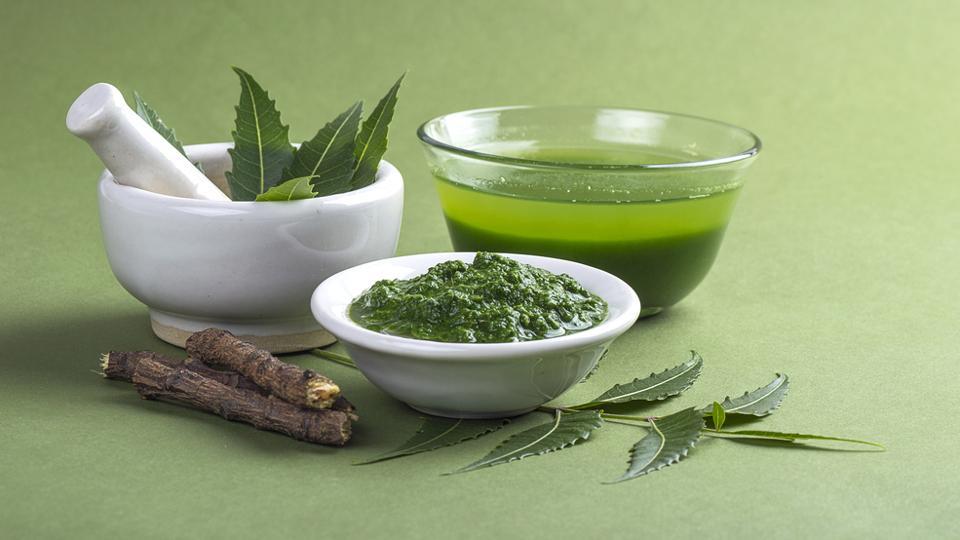
Ayurveda considered an ancient treasure is being practiced since 5,000 years in India
The word Ayurveda is made up of two words “ayu” means life and “veda” means knowledge, therefore Ayurveda is the knowledge of life. Ayurveda is a complete system of health, it deals with both preventive and curative diseases. It is the most scientific, enduring, oldest natural medical system of India. Ayurveda is a way of living in rhythm with nature. We often become victims of the stress from the modern world which brings about emotional imbalance which affects our overall well-being which further gives rise to diseases and causes illness that puts us on antibiotics or other medication and further causes even more side-effects and this vicious cycle keeps repeating and our health keeps deteriorating.
Ayurveda on the other hand is a science created to bring balance, harmony and help us lead happy and healthy lives.
The Heritage of Ayurveda
According to Charaka Samhita, the knowledge of Ayurveda is eternal.
This wisdom was initially conceived by Lord Brahma in his meditations along with four Vedas.
He transferred it to his son Daksha Prajapathi.
Daksha thought this knowledge to Ashvinikumara devas who were the divine physicians of Gods, who gave it to Lord Indra, king of Gods.
Decades back there was a phase of time, the society was facing misuse of values among people. They became hateful, self-centered and suspicious of others. As a result diseases took over the society. Great sages (rishis) like Bharadvaj, Atreya, Nimi, Kashyap and many others prayed to Loard Indra for the knowledge of Ayurveda. Lord Indra gave the knowledge to Bharadvaj. Bharadvaj gave this knowledge to Punarvasu Astreya. Punarvasu Astreya shared his knowledge to his six students Agnivesa, Bhela, Jatukarna, Parasara, Harita &Ksharapani. They expanded this knowledge of Ayurveda into eight branches. For thousands of years their teachings were transmitted orally later they were written down in Sanskrit verses.
Pancha Maha Bhutha – The Five Elements
In Ayurveda, it is said that components & functioning of the nature is similar to our body components and its functions.
Pancha Mahabhuta theory states that everything in the physical creation is composed of these 5 elements. The very first element that comes to existence is akasha (Ether). It is most expansive and least concreate of all. The next element derived is Vayu (Air) then comes Agni (Fire), then Jala (water) element is formed and lastly Prithvi (earth) element is formed.
Akasha (Ether)- Akasha is the space in which everything happens. It is a cavity with freedom to move. It is the field that source of all matter and space in which matter exists.
Vayu (Air) – Air is existence without form. It is the gaseous form of matter which is mobile and dynamic. Air element keeps the body in constant motion.
Agni (Fire) – Whenever there is movement, it produces friction and leads to formation of heat or fire. Fire has the power of transformation of any substance.
Jala (Water) – Jala is the substance without stability. Water element is a constructive force. The water element exhibits qualities like cool, liquid, dull soft, and sliminess. Its main actions are cohesiveness and adhesiveness.
Prithvi (Earth) – Prithvi is considered as stable substance. It represents the solid state of matter and contains all five elements. The Earth element is responsible for giving structure, shape and strength to the body.
Tridosas
Life in Ayruveda is conceived as the union of body, senses, mind and soul.
The living man is an assembly of three dosas: (Vata, Pitta, Kapha.), Saptha Dhatus (7 basic tissues: Rasa(bodily liquids ), Rakta(blood), Mamsa(flesh), Meda(fat), Asthi(bone), Majja(marrow), Sukra(semen). And waste products of the body such as feces, urine, sweat.
The growth or decay of body matrix and its constituents revolve around food which gets processed into dosas, dhatus and wastes.
Dosas are the bodily humors, or intelligent life principles which determine the characteristics, traits and features of the infants from parental sperm and egg.
During every individual’s life the dosas govern the body, its organs and their functions.
Dosas means that which get vitiated or disturbed. When they are in the state equilibrium the control all the activities of the body. They become tridathu (dathu means that which supports).
The five elements combine with one another and form various dosas.
VATA DOSA: ether and air combination. Vatta is an agency of movement and propulsion, it is that which moves.
PITTA DOSA: fire and water combination. Pitta is agency transformation, it is that which digests things.
KAPHA DOSA: water and earth combination. Kapha is an agency of solidity and cohesion, it is that which holds things together.
in 200 hour Yoga teacher training in goa , asana, Pranayama and Ayurveda threapy can help you to control your doshas,
If you’re considering an Ayurvedic treatment, or any other alternative therapies, be sure to speak with your primary care physician or other health care professional. Some Ayurvedic treatments may be dangerous when combined with prescription or over-the-counter medicines.

